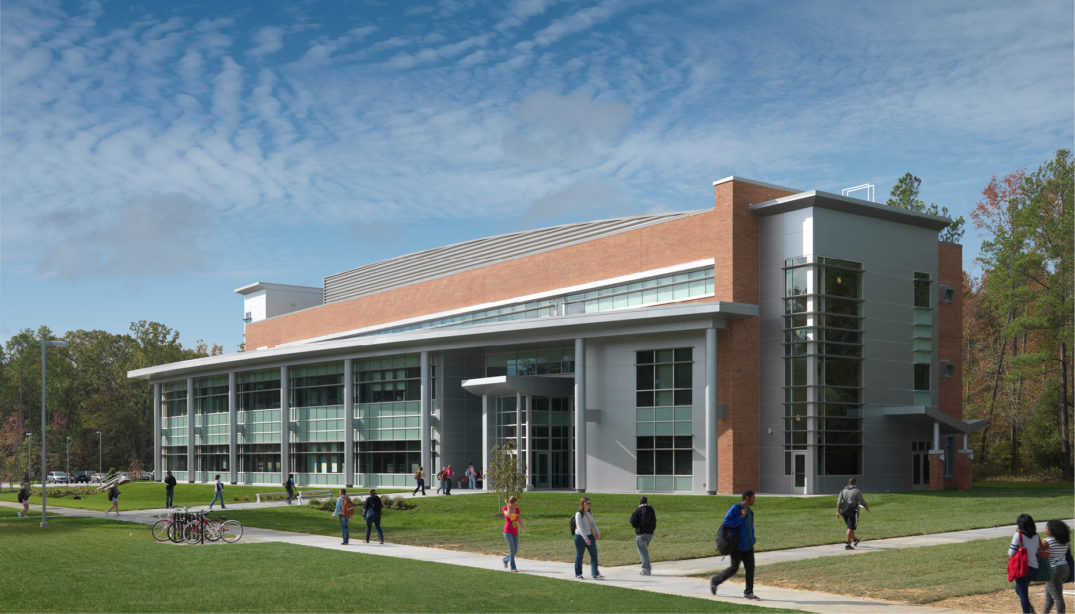
Moseley Architects, a leader in higher education facility design, is proud to announce that Richard Bland College’s new science and technology building, James B. McNeer Hall, was the recipient of the Louis I. Kahn Citation as the top post-secondary entry in American School & University’s 2011 Architectural Portfolio. An annual competition honoring education design excellence, the portfolio showcases projects that represent the most effective learning environments. A jury of American Institute of Architects (AIA) Committee on Architecture for Education members and education administrators evaluated submissions from architectural firms, schools, and universities across the country. This is the 29th year that the competition has been conducted.
The LEED Gold facility is the first new academic building on Richard Bland’s campus since the college was founded in 1960. The three-story building is home to biology, chemistry, physics, and mathematics classrooms and laboratories; academic computing facilities; seminar rooms; faculty and administrative offices; and faculty and student lounges.
The 2011 Jury commented that the building “helps complete the campus quad in a nice way. It’s a very-well detailed building—on the inside and outside. There is a great sense of transparency. The consistency of the interior treatments and high-quality environment provides a dignified setting.”
President Dr. James McNeer, for who the facility is named, expressed his excitement with the award.
“Richard Bland College is honored to be the recipient of the Louis I. Kahn citation. This state-of-the-art facility will enable our students to receive the best educational experience in their respective disciplines of biology, chemistry, computer science, mathematics, and physics.”
Dr. James McNeer, President of Richard Bland College
In addition to meeting the college’s educational needs, Moseley Architects designed the project to include green building strategies in order to earn LEED Gold certification with the U. S. Green Building Council. Noteworthy features included a second-story garden roof and highly-reflective roof surfaces to reduce the heat island effect; efficient HVAC system designed to reduce energy use by over 34 percent; and the use of regionally-manufactured and recycled materials.